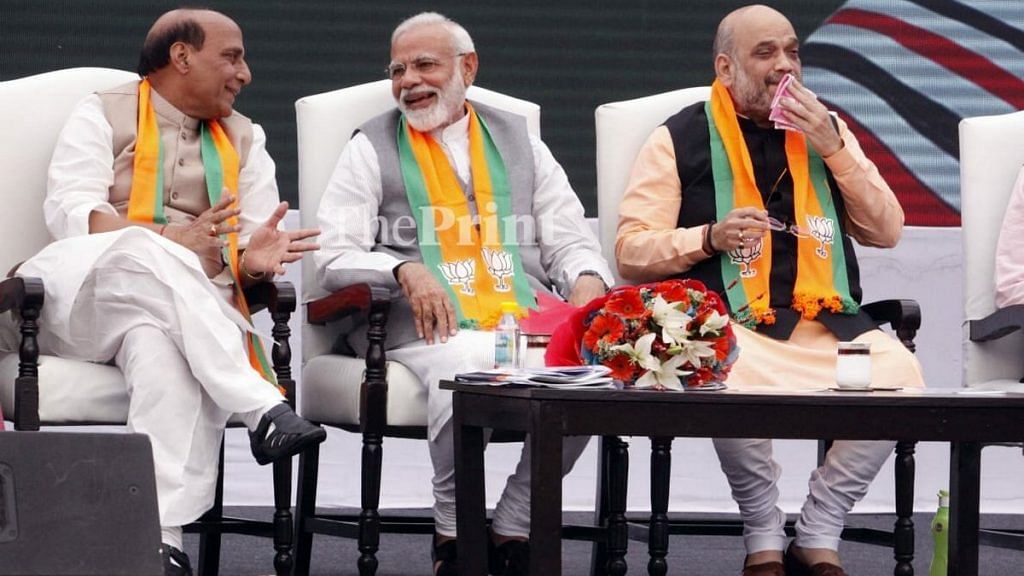In the aftermath of the Delhi riots, one question has often been asked, sometimes rhetorically, and sometimes with true questioning: which political party does this help, and who is most likely to be complicit in their production? Political scientists, both theorists and empiricists, provide some answers to this question, but the answer isn’t always obvious.
The short answer usually is: riots help the Bharatiya Janata Party (BJP), the party that trades most in a sense of majoritarian grievance and most relies on the consolidation of Hindu votes to push first past the post. There is some evidence to back this.
Analysing close assembly election races between 1962 and 2000, Yale economists Gareth Nellis and others concluded in a 2016 paper that a Congress candidate winning significantly lowered the likelihood of a riot breaking out. This, the authors found, was the result of Congress candidates’ dependence on Muslim votes to win elections, and the apprehension of religious polarisation if riots were to break out. This apprehension was well-founded in their dataset; a riot breaking out raised the probability of a BJP candidate winning in the next election.
Also read: Both Hindus and Muslims want development. But that’s where the similarity ends
State-level variation in riots
But why then don’t riots break out in all states of India?
In his seminal book on the interactions between electoral politics and ethnic riots, Votes and Violence: Electoral Competition and Ethnic Riots in India, political scientist Steve Wilkinson argued that “democratic states protect minorities when it is in their governments’ electoral interest to do so”. So, the government in charge protects minorities either when they are an important part of their current support base (or a key coalition partner’s) or when the electoral politics of the state is so competitive that the political party cannot afford to forego minority votes.
Wilkinson says that his model explained much of the state-level variation in violence in the post-Babri riots, and then in 2002: “states with substantial minority representation in government and/or high levels of party competition, such as Bihar, Maharashtra, Andhra Pradesh and Rajasthan seemed to do much better in controlling the communal riots that erupted in 2002 than those states such as Gujarat where there was low party competition or minority representation in government was minimal”.
Also read: Why Jungle Raj Bihar kept out communal riots for 3 decades but Delhi and Gujarat couldn’t
The 2020 Delhi riots
Where do the 2020 Delhi riots stack up in comparison? Delhi has also exhibited low levels of party competition, as defined by Wilkinson; since 2015, this has effectively been a two-party state.
In Wilkinson’s model, the relevant level of government to analyse is the one that controls the police and/or the Army. According to most post-election polls, Muslims were an important part of the support base of the Aam Aadmi Party (AAP) that governs the city-state, but not that of the BJP that governs at the Centre.
The BJP does not court Muslims in constituencies with significant Muslim population, but the party is more likely to need non-Muslims to rally strongly behind it to win.
Northeast Delhi, where the riots broke out, has the highest share of Muslims (around 30 per cent) among all constituencies in Delhi, and in February 2020, the BJP was unable to get the non-Muslim voters to fully rally behind it.
How does Delhi, with 13 per cent of its population Muslim, do in terms of minority representation?
At the state level, just 7 per cent of MLAs in the state are Muslims, but one minister in the seven-member cabinet is a Muslim. None of its seven MPs, all of whom belong to the BJP, are Muslim, and at the national level, Muslim representation is at the lowest ebb.
Another research supports the presence of Muslims in positions of power as being an important bulwark against violence. Analysing state assembly races between 1980 and 2007, economists Sonia Bhalotra and others have found that raising the share of Muslim politicians in state assemblies resulted in a sizeable decline in the incidence of Hindu-Muslim riots.
However, since 2014, the presence of Muslims in positions of power in the state cabinets has steadily fallen.
Also read: Delhi riots neither designed by Modi govt, nor Islamic conspiracy. It’s far more dangerous
The author is a Chennai-based data journalist. Views are personal
